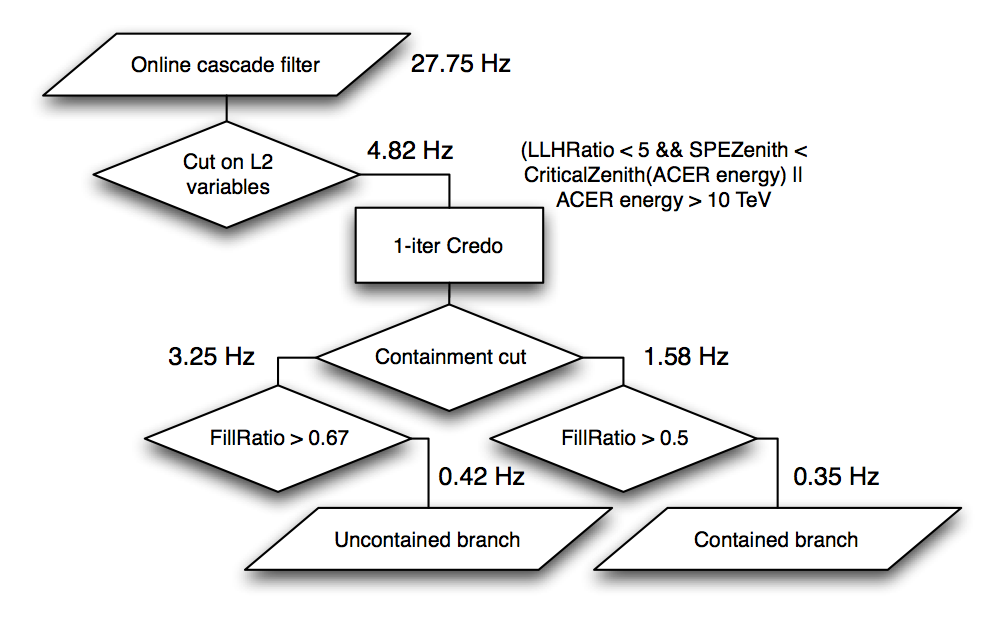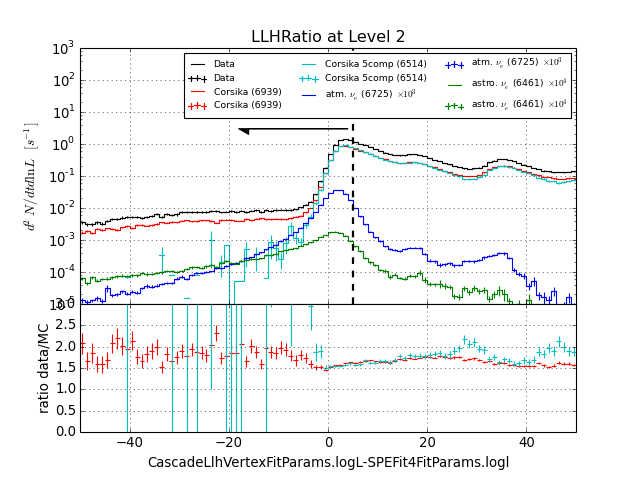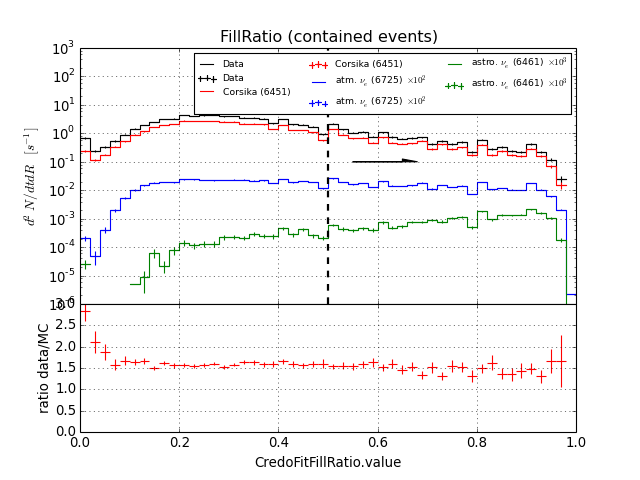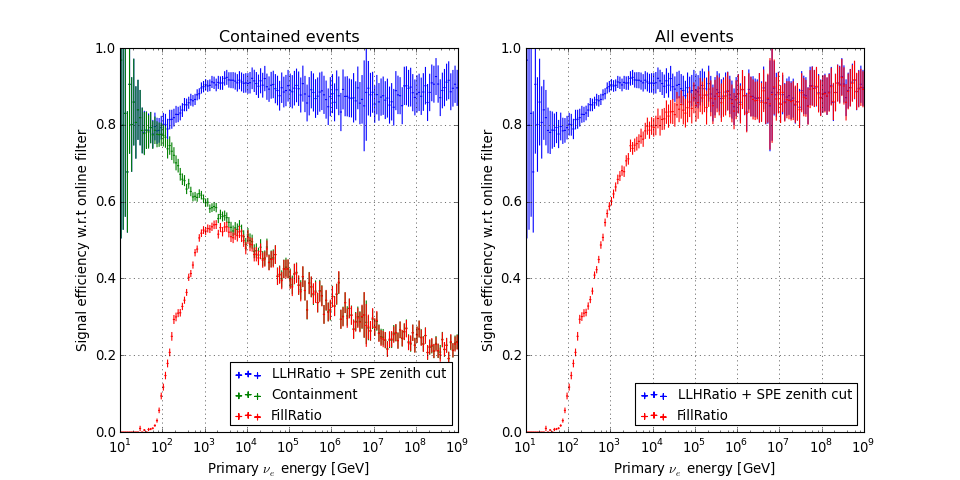The filter¶
Filter script¶
The filter script is part of CascadeL3_IC79, an IceTray project that is intended to be built as part of IceRec 04-01-00. The following diagram gives a general idea of the filter flow:

Flow of the filter script from Level 2 to Level 3.
The filter consists of two nested cuts. The first is a combined cut on the track/cascade likelihood ratio, track zenith, and cascade energy (based on the reconstructions done at Level 2) and reduces the data rate by a factor of 5. The second cut, (“FillRatio”) is done on the density of hit DOMs around the reconstructed cascade vertex (Credo). The FillRatio cut was optimized separately for contained and uncontained events.
Each of these cuts was chosen to maximize the difference between the cut efficiency for an atmospheric \(\nu_e\) spectrum and background from cosmic-ray muons. In all cases this yielded an equal or greater efficiency for an \(E^{-2} \,\, \nu_e\) spectrum than when the cuts were optimized specifically for \(E^{-2}\), at the expense of slightly smaller background rejection. One exception to this rule was the uncontained branch of the FillRatio cut; this cut was optimized specifically for \(E^{-2}\).
LLHRatio cut¶
The log-likelihood ratio cut keeps only events with:
The cut also explicitly keeps any events with a reconstructed cascade energy of more than 10 TeV.
(Source code, png, hires.png, pdf)

Energy-dependent zenith cut¶
While most atmospheric muons reconstruct as downgoing, there are also signal events with small zenith angles. The vast majority of downward-reconstructed background events, however, cluster at low reconstructed energies. In order to avoid all signal events where the track reconstruction happened to end up downgoing, the track zenith cut was parametrized in terms of energy:
Like the LLHRatio cut, this cut turns off at a reconstructed energy of 10 TeV.
(Source code, png, hires.png, pdf)
Containment criterion¶
fooboo.
After running a Credo cascade vertex reconstruction, events are divided into two categories:
- Uncontained events
- are those where the Credo vertex was outside the polygon defined by the outer strings, or where the DOM with the largest charge was on one of the outer strings
- Contained events
- are all others.
The containment criterion is stored in the frame as an I3Bool called “CascadeL3_Containment”.
FillRatio cut¶
The FillRatio cut was optimized separately for contained and uncontained events. Both the cut value and the scale factor \(\alpha\) used to calculate the fill ratio from the mean vertex-hit distance were optimiezed separately for contained and uncontained events. In both cases, the greatest signal-background separation could be had by using both HLC and SLC pulses with no cleaning applied. The optimized cut values are:
(Source code, png, hires.png, pdf)

Efficiencies¶
| Dataset | L2 | L3 | L3 (contained) |
|---|---|---|---|
| Burn sample | 27.75 | 0.76 | 0.34 |
| Corsika | 16.73 | 0.47 | 0.24 |
| Atmos. nu_e | 0.000245 | 0.0000908 | 0.0000809 |
| Astro. nu_e | 0.00000268 | 0.00000241 | 0.00000125 |
The filter reduces the experimental data rate by a factor of 36 from Level 2 while maintaining nearly 100% efficiency for contained cascade events above 10 TeV.
(Source code, png, hires.png, pdf)

